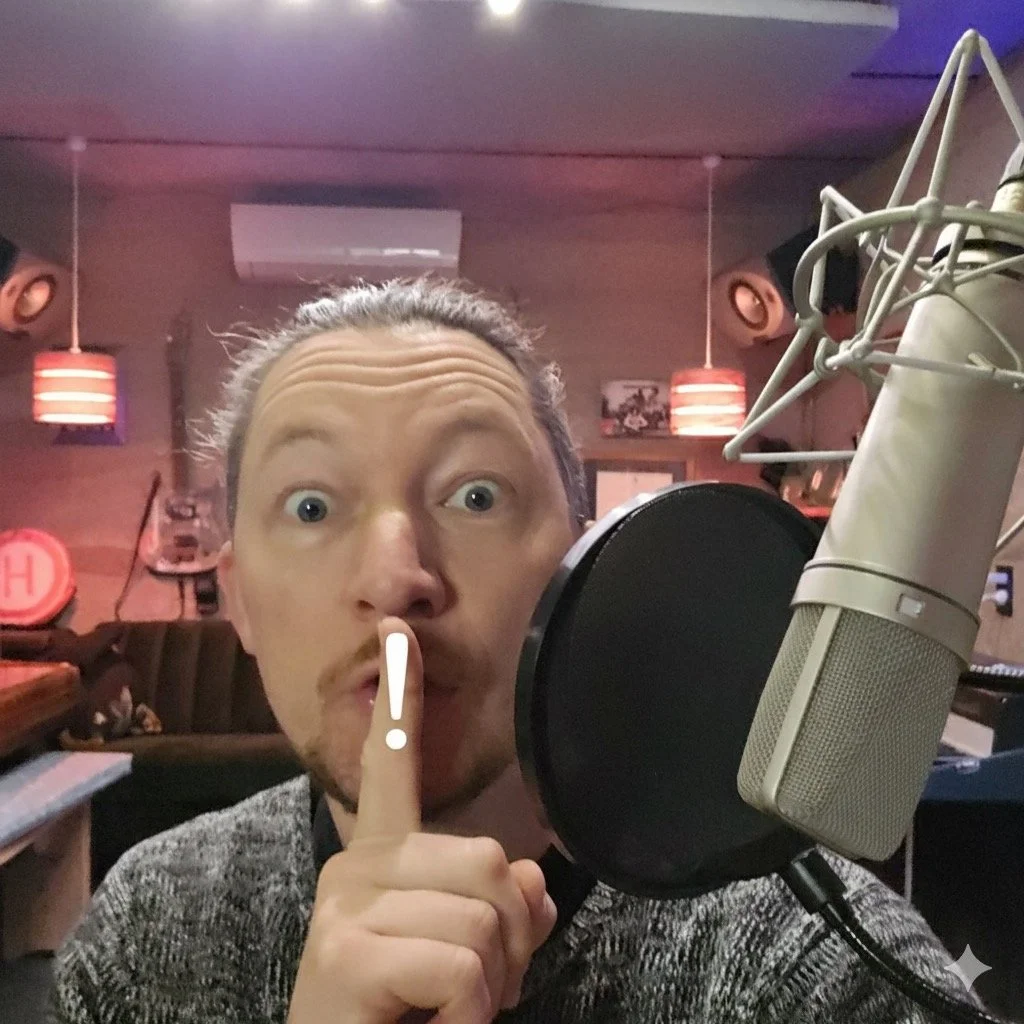Unseen Punctuation: How Breath Control Engages Eardrums
For many years, the standard practice in radio production, where my own career as an audio engineer began, was to treat the breath as an enemy.
We audio engineers were encouraged to meticulously remove breaths to ensure a clean, seamless delivery that would not interrupt the pacing or distract the listener. And in many camps and genres, this approach is still taken.
A few years after I moved behind the microphone, I realised that this approach was perhaps a little misguided, and perhaps the sound of breaths is an integral part of the read, it’s emotion and what it signposts to the listener. In movies, it is widely recognised that music provides the emotional underscore of how we should be feeling about a scene, and I believe that this is what breath can do for a range of reads as a voiceover. It gives us clues as to the emotional state of the locutor. A warm, confident narrator will use a full, relaxed breath that underpins their authority and sincerity. A sigh or a held breath can add layers of internal thought, frustration, or reflection that the words themselves might not contain. The breath, therefore, transforms the reading from mere information delivery into an emotional experience
The breath also serves as the conductor of the narrative orchestra, setting the essential pace and cadence of the read. A deep, measured inhale before a sentence signals importance and prepares the listener for a dramatic shift or a crucial piece of information. Conversely, a rapid, shallow gasp can instantly convey urgency, panic, or excitement, driving the speed of the script forward. For character voice work, breath is one of the primary ways we determine the physical state of the character we are playing – By using breath control not just to fill the lungs, but to create silence and anticipation, the artist can shape the flow of the entire message.
Other Critical Functions of the Breath in Performance
Separates Ideas (Auditory Punctuation): Since a listener cannot see commas, semicolons, or periods in an audio-only format, the breath acts as a form of auditory punctuation. A controlled breath break helps separate distinct clauses or complex ideas, preventing the read from becoming a run-on sentence and making complex information easier for the listener to process.
Creates Suspension and Emphasis: A pause taken immediately before a key word or phrase (by using an audible or deliberate breath) creates an immediate moment of silence. This silence naturally draws the listener's ear to the word that follows, making it the focal point and adding emphasis.
Establishes Authenticity and Trust: The inclusion of subtle, real human sounds—like a breath—breaks the "perfection" of a purely digital or robotic delivery, lending a critical layer of authenticity to the performance. This subtle imperfection fosters trust and reassures the listener that they are engaging with a genuine human voice.
Controls Tone and Volume (Dynamic Range): The intake of air is necessary for projecting the voice. A voice actor intentionally takes a large breath to prepare for a powerful, high-volume delivery, or a short, quiet breath to transition to a more intimate, conversational tone. The breath itself dictates the physical limits and dynamic range of the voice that follows.
In essence, a voice artist must master the moment before they speak. They must choose where to breathe, how loudly to breathe, and know what kind of context that breath control creates. This conscious use of breath control is what allows the voice to do more than just relay information; it allows the voice to connect, persuade, and resonate deeply with the audience.
It’s interesting to note that AI synthetic voice engineers have had to add breath back in for almost all of their models, as it brings their synthesized voices alive.
It begs the questions: Why is it still the norm for human voiceover artists to take the life out of their recordings? And how much more could your work be engaging listeners if you give focus to the breath?
In summary, I do think there is a place for removing some breaths in the right contexts, but rather than a default dedication to removing all traces of breath, I want to promote the concept of ‘Tactical breaths’ and leave in the breaths that mean something, and remove those that don’t as a standard practice.
What do you think? Leave a comment below!
